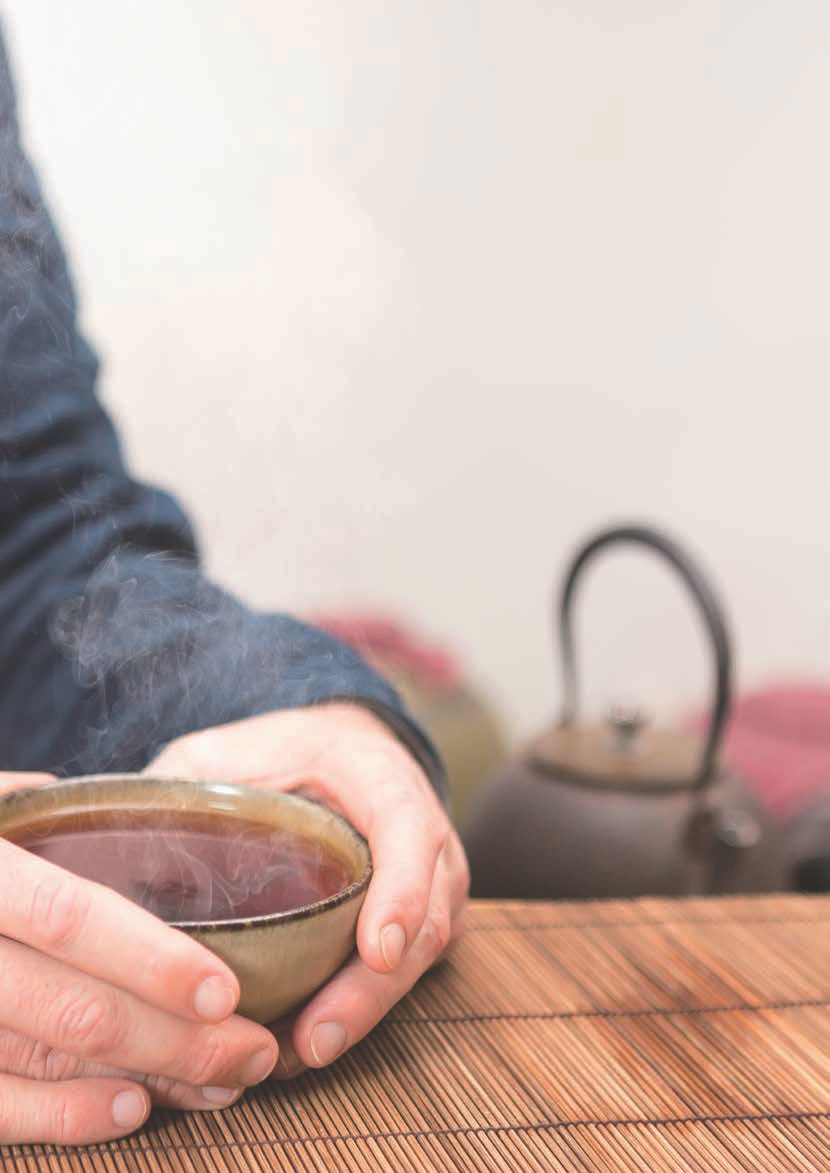
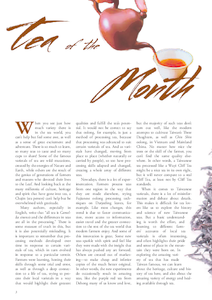 |
|
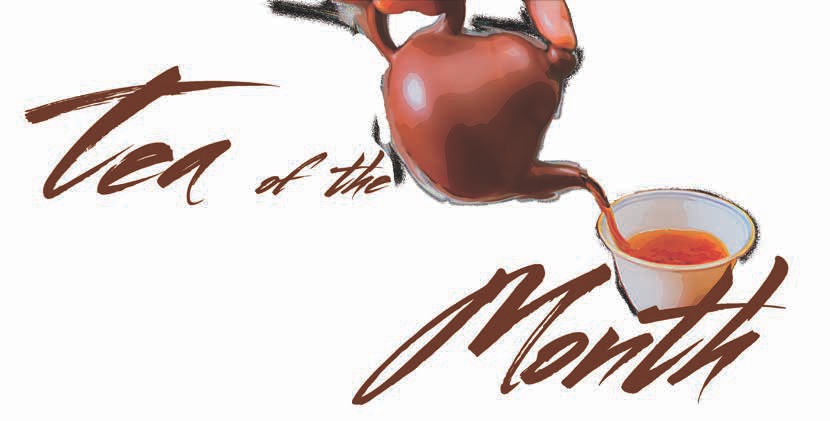
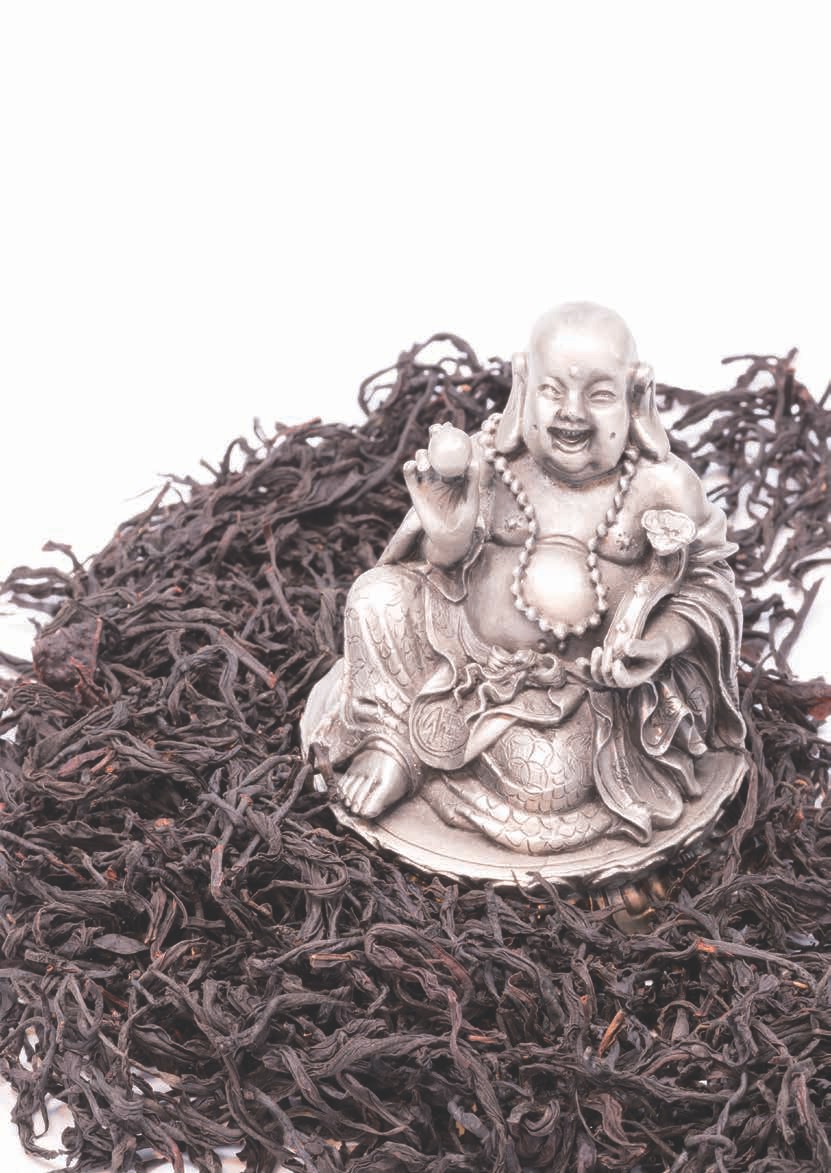
When you see just how much variety there is in the tea world, you can't help but feel some awe, as well as a sense of great excitement and adventure. There is so much to learn, so many teas to taste and so many cups to share! Some of the famous varietals of tea are wild mutations, created by the energies of Nature and Earth, while others are the result of the genius of generations of farmers and masters who devoted their lives to the Leaf. And looking back at the many millennia of culture, heritage and spirit that have gone into tea, a Chajin (tea person) can't help but be overwhelmed with gratitude.
Many authors, especially in English, write that "all tea is Camellia sinensis and the differences in teas are all in the processing." There is some measure of truth in this, but it is also potentially misleading. It is important to remember that processing methods developed over time in response to certain varietals of tea, which in turn evolved in response to a particular terroir. Farmers were learning, honing their skills through some trial and error, as well as through a deep connection to a life of tea, trying to process their local varietals in a way that would highlight their greatest qualities and fulfill the tea's potential. It would not be correct to say that oolong, for example, is just a method of processing tea, because that processing was advanced to suit certain varietals of tea. And as varietals have changed, moving from place to place (whether naturally or carried by people), so too have processing skills adapted and changed, creating a whole array of different teas.
Nowadays, there is a lot of experimentation. Farmers process teas from one region in the way that they are made elsewhere, trying Fujianese oolong processing techniques on Darjeeling leaves, for example. Like most changes, this trend is due to faster communication, more access to information, easier travel and the greater connection to the rest of the tea world that modern farmers enjoy. And some of this innovation is great. Some new teas sparkle with spirit and feel like they were made with the insight that has always pushed any art forward. Others are created out of marketing - to make cheap and inferior copies of the much better original. In other words, the new experiments do occasionally result in amazing teas, like the purple red tea from Dehong many of us know and love, but the majority of such teas don't turn out well, like the modern attempts to cultivate Taiwan's Three Daughters, as well as Chin Shin oolong, in Vietnam and Mainland China. No matter how nice the trees or the skill of the farmer, you can't find the same quality elsewhere. In other words, a Taiwanese tea processed like a Wuyi Cliff Tea might be a nice tea in its own right, but it will never compare to a real Cliff Tea, at least not by Cliff Tea standards.
When it comes to Taiwanese varietals, there is a lot of misinformation and debate about details. This makes it difficult for tea lovers like us to explore the history and science of new Taiwanese teas. But a basic understanding is worth the effort, and listening to different farmers' accounts of local tea varietals is often interesting, and often highlights their pride and sense of place in the mountain they were born on. In exploring the amazing variety of tea that has made Taiwan famous, we can learn about the heritage, culture and history of tea here, and also about the amazing variety of energy and healing available through tea.
As you may remember, there are two main varietals of tea: small leaf and large leaf. Originally, all tea comes from the forests in and around Southwest China: Yunnan, Vietnam, Laos, Myanmar and Eastern India. The original trees are single-trunked, with large wide crowns that can grow several meters in height. The roots also grow downwards, often extending deeper than smaller leaf varietals. Then, as tea traveled north and east - naturally or by human hands - it adapted to colder, sometimes higher, climates and terroirs. These trees, called "small leaf," slowly evolved to have several trunks, like a bush, with roots that extend outwards rather than down. The leaves got smaller and smaller as tea progressed north into colder climes. In fact, they are so small in places like Japan that when they are rolled, they look like little needles (like sencha or gyokuro).
Like many plants, every tea seed is unique, allowing it to rapidly adapt in new environs. And without any of the grafting technology used in plantation agriculture today, all the traditional teas were what we call "living tea," which, as many of you will remember, means that they were seed-propagated, allowed room to grow up (and between each tree), lived in biodiversity, weren't irrigated and were cultivated with respect. (Sadly, most tea is not living tea these days.) The early farmers quickly realized that when you moved tea to a new location, it changed completely to suit its new home. Because of this, they called it "Immovable," celebrating that a region's tea trees were forever bound to that region and that region alone. As a sacred herb, tea has always decorated Chinese relationships, from business deals to spiritual transmissions between Zen master and student, offerings to the gods and even weddings. One of the reasons why tea was used to solidify important relationships is that they also hoped these commitments would be "Immovable."
It should therefore come as no surprise that the tea trees planted in Taiwan quickly developed unique personalities due to the terroir here. It's amazing how quickly this happens, especially when skilled craftsmen are involved. Not only do the trees evolve into new varietals naturally, but farmers begin to create new hybrids, researching the differences in search of wonderful new teas. Here we can make an important distinction between varietals and cultivars. The former is a natural distinction caused by tea adapting and evolving in new terroirs. A cultivar, on the other hand, is a manmade kind of tea, produced by crossing strains and exerting genetic pressure on tea trees over many generations. Our tea of the month is a cultivar.
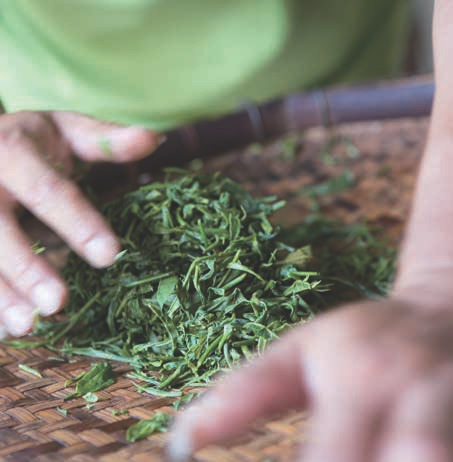
Farmers also adapt their processing methodologies over time, listening to how the leaves want to be dried. Great skill (gongfu) in any art always involves listening to and deeply understanding the medium. In tea brewing, for example, we try to brew the tea as it wants to be brewed. Similarly, master tea makers adapt their processing to suit the leaves, the season, the rainfall, etc. Saying that they processed the tea the way it "wanted" to be processed is perhaps misleading, but English lacks the proper sentiment. More literally, what we mean by this is that as new varietals evolved to new environments, influenced by the unique terroir there, the farmers also evolved their processing - testing and experimenting, "listening" to the results as they drank each year's tea, and slowly changing their methods to bring out the best in the tea. In fact, bringing out the best qualities of that varietal is what we mean by processing the tea the way it "wants" to be processed. You could say the same about brewing any particular tea.
With the help of the Portuguese, Dutch, and later the Japanese, Taiwan tea production would gain international repute. From 1895 to 1945, Taiwan was under Japanese rule. At that time, the Japanese sought to increase all agricultural production island-wide, and took a great interest in Taiwanese tea. They brought many large leaf trees and saplings, as well as seeds from eastern India, to make red tea plantations, choosing Sun Moon Lake for its accessibility and because the terroir is similar to the original homes of these trees. Soon after, the Japanese were expelled and their gardens were abandoned. In the coming decades, these semi-wild gardens would grow up and also produce completely wild offspring, as well as adapting and relating to the local terroir in all the amazing ways a tea tree can - through the soil, the insects, rain and minerals, sun and rock.
With the help of local farmers, the Japanese formed the Taiwan Oolong Tea Research and Development Association in 1926. They focused on research into new varietals of tea that would be suited to different terroirs around the island. They hoped to optimize desirable flavors, aromas and other characteristics in Taiwanese teas and also promote a greater resistance to pests, perhaps unknowingly foretelling the detrimental effects pesticides could have on sustainable agriculture. And this organization survived the war, continuing this project after the Japanese were expelled. They still have a large research area in Sun Moon Lake, still devoted to experimental cultivars, and are even conducting a long-term study on the detrimental effects of pesticide use.
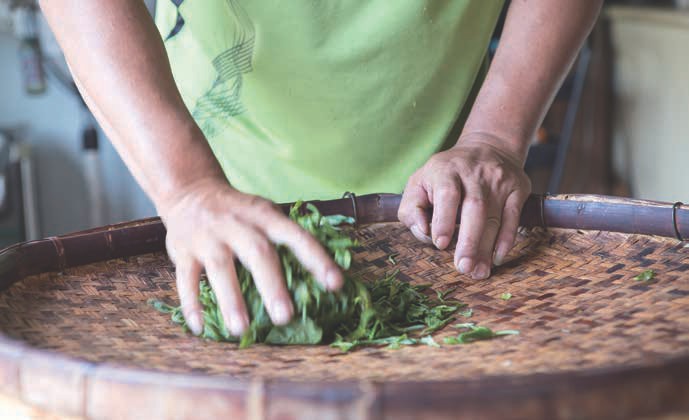
Many unique varietals were created to suit Taiwan. In the 1970s the three most famous varietals unique to Taiwan began commercial production, often called the "Three Daughters": Golden Lily (Jing Shuan), Kingfisher Jade (Tsui Yu) and Four Seasons Spring (Si Ji Chun). Some of you who have been in the Hut for a while will remember that we sent you all three of Mr. Xie's daughters. The Three Daughters have played a large role in propelling Taiwanese tea to such prominence in the tea world over the last few decades - an eminence that has brought positive influences to the island, in the great surge of economic growth for farmers and aboriginals, as well as the development of one of the world's richest and most vibrant tea cultures, but also negative influences, as the great increase in demand for Taiwanese tea has also increased the need for agrochemicals and therefore caused a lot of environmental destruction.
Of the Three Daughters, only Four Seasons Spring is a natural varietal. Golden Lily and Kingfisher Jade are manmade cultivars developed to be heartier and resist pests. Even though the Three Daughters have been instrumental in promoting Taiwanese tea culture, there is another famous manmade cultivar we'd like to introduce this month, called "Ruby Red (Hong Yu)." In 1933, Mr. Kuo Shao-San overcame a series of hardships to bring back a special type of red tea from the Chiang Mai Mountains of Myanmar. He called the trees "Zen Tea." He planted these seeds in Puli, Taiwan and they flourished into a "Zen Tea" garden.
Currently, amongst all the types of Sun Moon Lake red tea, Taiwan Cultivar No. 18 (Ruby Red) and Taiwan Cultivar No. 8 (Assam red tea, like the "Elevation" we send out every year) are the most popular. Taiwan Cultivar No. 18 is a hybrid of the large leaf "Zen Tea" trees from Myanmar and wild indigenous Taiwanese trees. The artificial crossing was accomplished at the Yuchih Branch of the Tea Research and Extension Station in the 1950s, and had the experiment number of 40-58, so the local farmers also called the hybrid "40-58" or sometimes just "58." It was not until 1999 that the "40-58" hybrid passed the cultivar nomenclature review and was officially named "Taiwan Cultivar No. 18." The common name "Ruby Red" was chosen through an open selection process, involving many Taiwanese tea lovers, in 2003.
Ruby Red has one of the most distinct flavors of any tea on earth, which is what caught the experimenters' attention in the first place. Though this cultivar was developed as part of the ongoing research to create varietals that have higher yields and are more pest-resistant, Ruby Red was quickly recognized as delicious, with a very unique flavor unlike all other tea. Its creation was therefore different than the other daughters of Taiwan. While their flavors are also unique, and were to some extent enhanced and encouraged over time, they were noticed and promoted primarily for other reasons, like Four Seasons Spring's increased yield. Ruby Red, on the other hand, is a cultivar born, grown and promoted mostly for its exceptional flavor. And when you drink it, you will see why. Repeating that it tastes like no other tea again and again still won't prepare your for that first sip!
Ruby Red tastes of cinnamon and wintergreen or mint, in some ratio, depending on whom you ask and which Ruby Red they are drinking. It unfolds in a complexity that few red teas are capable of. And your exclamation of "Wow!" is probably not much different from the first farmers who recognized the new cultivar. As Master Lin always says, "If and until you try a fine tea, it's too hard to tell."
Ruby Red is a difficult tea to produce. The yield is low and it requires more work than other kinds of red tea. You can read that red tea is "fully" oxidized, but that actually isn't possible. But it is the most oxidized of all tea. Most red tea is processed in three to four phases: First, it is picked and then it is withered, traditionally on bamboo trays stacked on shelves built to hold them. The withering of red tea is a very long process, usually lasting from twelve to twenty-four hours. It is then rolled for an exceptionally long time as well, to continue the oxidation and to break down the cells. It literally turns into a pasty mass in the process. Then it is dried, usually in an oven. Ruby Red is more delicate and so the withering/ oxidation and the rolling have to be controlled and monitored more. When it is well made, it is often expensive as well. We are very fortunate to have this month's tea, which was partially donated by Master Su in Sun Moon Lake, whom you can read about in the Further Reading section. If you've joined us through the great teas we've shared so far, you can see that this is our year!
Ruby Red is an amazing tea. Try sharing it in the morning. If you can, wake up very early and have a dawn session with Ruby Red in some meditative space. You will find that its delicious flavor and excellent energy will change the rest of the day. We hope you enjoy this month's special tea as much as we do!
散 落 的 葉 子 是 禪
Zen in hand, The long and winding road Feels less foreboding. Letting go my staff, I can walk on my own now.

At the beginning of the session, many thoughts were running through my head. But after a couple of bowls, the sensations around my chest became more apparent, and I slowly became more aware of my heartbeat. Even as my mind floated from one thought to the next, the tea grounded me by allowing me to fall back into this heightened awareness around my heart.
I really enjoyed this tea brewed in a side-handle teapot with as high a temperature as possible and a very short steeping time. This preserved the very pronounced flavor and aroma over many infusions while the high temperature invited the tea deeper into my body. The liquor was smooth and coating and easy to drink bowl after bowl. I felt uplifted and clear while drinking this tea, and at the same time, completely satisfied right where I was, appreciating the strong flavor of peppermint and cinnamon. It was excellent to drink on a cool and sunny morning shared with four amazing guests, leaving me satisfied and in high spirits after the tea session finally concluded.
This tea was fragrant and smooth. I was really surprised by its effect. Normally, I feel very uplifted yet grounded by red tea, and that is why I love to start my active day with it. This time, however, I felt that my energy relaxed, dropping down and I had to lie down. It felt like energy had to spread through my body. When I put my head on the pillow, I felt that the warmth of the tea was covering my body like a warm blanket, leaving me feeling cozy and nourished.
The first thing I noticed was a sweetness in the tea's aroma. But taking it in, the first sip felt strong and bold. It flowed smoothly, leaving an earthy taste in my mouth. Sitting with this tea, I felt really content and connected to all the elements around me - the wind outside, the rustle of the trees, the others at the table, sitting in silence and the Leaf, connecting us all. I had a really peaceful feeling and enjoyed many bowls.

Ruby Red can be made in a bowl or with a side-handle pot. Originally, all bowl tea was prepared as leaves in a bowl or boiled tea. The traditional kettles used to boil all Chinese herbs, including tea, were side-handle. Wu De developed side-handle tea brewing because of the great variety of tea in the modern world. A long time ago, there was little processing in tea, so all leaves could be dropped into the bowl or boiled. But nowadays, we have such a huge world of tea, and many varieties aren't nice directly in the bowl - some are teas with small bits that get into your mouth or teas that become too bitter when steeped for so long in the bowl. Side-handle tea, therefore, is a way of drinking all these teas with the same spirit of bowl tea, as simplicity and connection with Nature.
If you think you would rather focus on the energetic, meditative aspects of Ruby Red, you may want to put a few leaves in a bowl. The tea will be less patient, and maybe less delicious, but the session may be deeper and more inward. Conversely, if you are excited to try out the flavors in this amazingly delicious tea, you may want to steep it in a sidehandle pot. Fortunately, we have sent you enough that you can try both if you want.
Red teas are usually forgiving, which means they are easier to brew (though Ruby Red is less so than other red teas). Red teas are nice when they are a bit strong, so either put a tiny bit more leaf than you are used to or steep this month's tea a tiny, tiny bit longer (not too much leaf/steeping time or it will be bitter). We don't like offering exact amounts, as this will depend on what size of pot you're using, what kind of fire, and so many other factors. It is better to grow a sensitivity to your own tea and teaware. You will know if you have put in too much, or steeped the tea too long. Tasting an under-steeped, as well as an over-steeped tea is an important experience for learning how to brew tea properly, and adjusting our mistakes is how we improve over time.
